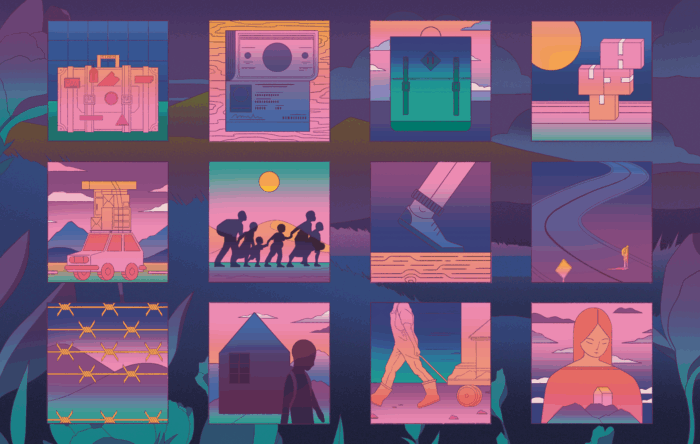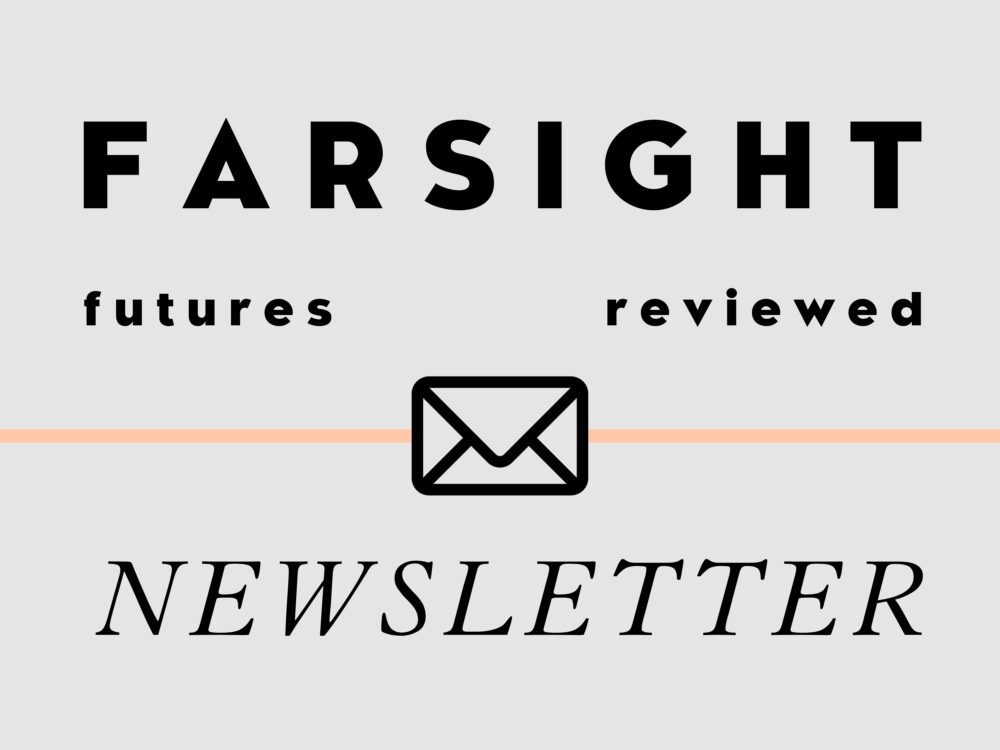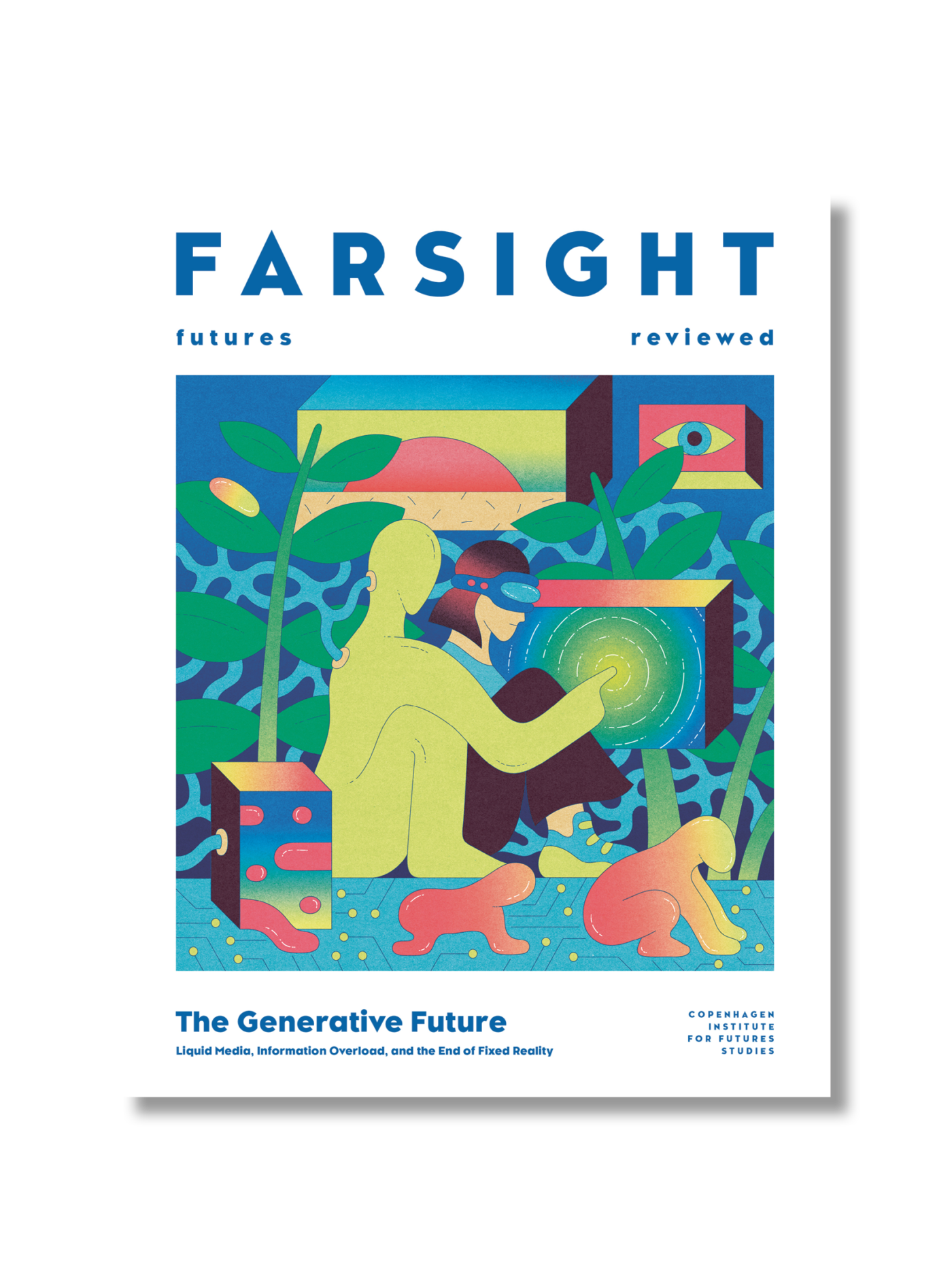
In turn, we use cookies to measure and obtain statistical data about the navigation of the users. You can configure and accept the use of the cookies, and modify your consent options, at any time.

Writer of ZINE and Reddit’s Head of Foresight, Matt Klein, shares his thoughts on what foresight can learn from cultural research, why trend reports aren’t necessarily all BS, and why memes should be taken seriously as both products and drivers of culture.
Image: Elise Racine & The Bigger Picture / Better Images of AI / Glitch Binary Abyss II / CC-BY 4.0
Matt Klein is a cultural theorist, strategist, and writer. As Head of Foresight at Reddit, one of the internet’s busiest websites and largest hubs for internet culture, he deciphers memes, micro-communities, and digital trends to make sense of social shifts. He’s also the writer of the publication ZINE, which studies overlooked social shifts. We spoke to Klein about what foresight can learn from cultural research, why trend reports may not all be entirely BS, and why memes should be taken seriously as both products and engines of culture.
Casper: Matt, do you consider yourself a futurist? Or would you rather not use the term?
The fact that this is a contentious topic is a ‘signal’ in itself! I often refrain from calling myself a futurist – only because personally, I’m preoccupied with what is happening now rather than projecting forward to 2050 and working my way backwards from there. I think that to understand the future, you need to understand the now.
Casper: The reason why I ask is because you work with many of the same tools we use at CIFS. We analyse trends, seek out signals of change, and envision novel scenarios, just like you do.
But your work is directed much more towards cultural analysis. This is somewhat rare in the futures community: if you read a report detailing different future scenarios, it will usually describe technological, political, and economic forces leading to a particular scenario in detail. Culture, on the other hand, is often left out. Macro-trends can be (somewhat) tangibly measured in the present and extrapolated therefrom. The same cannot be said for culture.
Do you think culture and its increasingly online manifestations is poorly understood in the foresight and futures studies community?
A tendency I’ve noticed is the marketing professional class viewing online spaces as something lower in importance or legitimacy than offline spaces. Take memes. To me, memes embody culture. Memes are fossils of the zeitgeist. They are nuanced, visual, data-rich artifacts revealing social sentiment.
But, I would be very surprised if the stereotypical futurist keynote speaker working with policymakers would recognise the importance of Luigi Mangione memes as an expression of the current zeitgeist.

Broaden your horizons with a Futures Membership. Stay updated on key trends and developments through receiving quarterly issues of FARSIGHT, live Futures Seminars with futurists, training, and discounts on our courses.
become a futures memberThey wouldn’t be caught dead sharing a meme that celebrates the assassination of the United Healthcare CEO. Yet, there are few signals more provocative and culturally rich than those memes – they reveal so much more about our culture than that the future is going to be run by IoT devices. We’re trying to understand humans, after all.
I think online culture is misunderstood broadly. We still primarily view online spaces as a relegated ‘Other’ – even when it has had legitimate offline consequences. The social media theorist Nathan Jurgenson calls this the digital dualism fallacy: this idea that we can separate culture – the online and the offline. This is a fallacy. What happens online is real life! Even things like virtual worlds and VR are as real as the real world. They affect our identity construction, social bonds, and emotions.
That said, we still require a distance between our analytical eye and what we see online. We’ve given up on discernment. We think every viral meme is reflective of the global population, or think “online is not real life.” We still require a POV, distinction, and nuance. The Internet is not everything.
Unfortunately, there are so many people studying online culture that view memes as something to hijack and incorporate their brand into. Rather than a legitimate representation of culture, memes are merely seen as a vessel for communication or entertainment. This totally misses the mark I’m afraid.
August: A lot of futurists like to focus on megatrends – large, long-term drivers of change that we can be reasonably confident will continue shaping smaller, more indecipherable trends. Things like globalisation, digitalisation, individualisation, urbanisation are quite a contrast to the aggregated cultural micro-trends you research.
When should foresight practitioners lean towards grassroots trends, rather than large drivers of change?
I don’t think the two should be pitted against one another. They obviously both have value. The global macro forces help paint broad strokes – the technologies and larger narratives at play – while the smaller and more ephemeral changes are a finer paintbrush.
The bigger a trend gets, the more likely it is to be a driver, a catalyst for other things. Take the climate crisis, which, at one point, was a trend. It was an emerging concept. Now, it’s at such a scale that it informs other trends.
I feel like I sit between two worlds. When I speak to the marketing world – the advertisers and the marketers – I’m beating my drum telling them: “You have to look at the larger cultural forces at play… zoom out! You’re too obsessed with Moo-Deng the baby hippo and pop-culture moments which won’t matter next week!” But when I speak to futurists and policymakers, I’m the memes guy. I’m the one who looks at the specifics, sifting through forums for rich cultural data. It’s funny that I occupy both spheres, because if you’re going to paint an accurate landscape of the moment, you’ll need more than one paintbrush.
Casper: Internet culture has become political, to a much larger extent than it used to be. Instagram went from being a place where people posted their meals to becoming a place of online activism. X has become even more politicised. Gen Z obsesses over political compass memes and is inventing weird, niche, hybrid ideologies. It’s a noisy era some think is symptomatic of ‘hyperpolitics’ – where everything is political, but action is very fragmented. Much of it is performative and not something that leads to real-world change.
How do you distinguish between these two things – the performance and the actual ‘activism’ – when trying to look for what’s signals of change online?
I think that’s an oxymoron. Everything online is innately posturing. As soon as you introduce a crowd, one puts on a performance – authenticity is out of the window. Today, we are performing for an online global audience 24/7 where there is no backstage. When we post, we are subconsciously thinking about that audience.
If you can root an observation in human desires and needs, then I think it’s probably worth paying attention to.
August: That still assumes you’re dealing with real people, though. With generative AI flooding the internet, aren’t online trend-forecasters such as yourself at risk of being made redundant from a ‘dead internet’ – where most online activity consists of bots and ChatGPT posting? How do you sort the wheat from the chaff?
Unfortunately, I am a growing believer in the dead internet theory. I find it very concerning as someone who really cares about online spaces and what they grant us.
The idea of a dead internet shakes up the digital dualism fallacy mentioned earlier. Distinguishing between offline and online spheres of culture is now increasingly valid when there’s so much illusory bot-driven and AI-generated content. One exercise I’ve done many times is where I read a post on X, thinking there’s no way this this is written by a human. I scroll through their profile. They only repost things about politics. I then reverse-image search their profile picture and find them on LinkedIn, whereupon I notice they have zero connections and their job experience doesn’t match their education. And then you clock the company website – it doesn’t exist either.

Explore the world of tomorrow with handpicked articles by signing up to our monthly newsletter.
sign up hereNot everyone has time to go down that rabbit hole. So, I think the solution is to proceed with a whole lot of scepticism and caution, seeking places we know are inhabited by real people. It’s also worth noting that sources of human intelligence may not be large platforms: we may have to look in smaller nooks and crannies to make sense of change. That’s hard and often expensive – both in terms of time and money. And if you’re not already part of the subculture or community, it becomes increasingly difficult to make sense of that culture.
Casper: You’ve said that ‘trend reports are BS’ and pointed to how the industry of trend forecasting is like a snake eating its own tail – trend reports quoted in other trend reports quoted in more trend reports.
On your website, you reference a study you did where you asked 200 strategists if they could distinguish between trends published in 2018 and 2024. You found that they were better off guessing 50-50 than trying to discern the difference. They often couldn’t tell when something was published six years apart.
In this circular universe of trend reports and social media punditry, what would your advice be to a budding futurist, foresight practitioner, or cultural analyst who’s trying to make sense of the world?
Like you say, my immediate takeaway was that trends are repeating themselves – but it’s actually more nuanced. I often leave this part out in my keynotes, because it takes a bit of time to run through.
There are two caveats to my observation. The first is that perhaps the trends are not repeating themselves but rather taking a long time to gestate. Perhaps what was being reported years ago is still relevant today. In 2018, we had trends like organisations taking on the role of civil servants, changing beauty standards, increased use of psychedelics, etc. These are all still relevant in 2025. To expect that a trend has a shelf life of 365 days is unfair.
The insight, in my view, is that we expect trends to move faster than they actually do. So rather than discrediting trend reports, their repetition may actually strengthen their legitimacy. The fact that they were talking about these things in 2018 means that perhaps they’re effective!
The other caveat is regarding trend-forecasters supposedly copying each other. Well, when it comes to meta-trends, the exercise is about finding the largest common denominators. So sure – a trend report may include something super fringe and niche – but that wasn’t the purpose of the exercise.
Casper: You’re probably the only person who reads all these trend-reports.
(Laughs) I mean, I encourage people to join me! I tell them here are the folders. Here’s all the shit. Let me know what you think. I’ll publish your findings – let’s talk about it. But because it’s such a manual and mind-numbing process, no one’s taking up my offer. So, all we’re left with is my take.
And honestly, I think that’s an important insight. I’m very mindful to remind people that I’m only one voice. I talk a lot about foresight activism, and I acknowledge the sensitivity of a space where all it takes is one meta trend-report giving the state of the union for it to become the prevailing narrative.
There’s just so much to wade through… and no one’s willing to read these reports and publish their findings, so you only hear mine! I’m acknowledging my humility here. I’m just giving one take – it’s not fact.
August: As the Institute’s resident chronically online Zoomer, I’m wondering whether you think there’s a growing ‘gap’ in our mutual cultural understanding between younger generations and older ones.
Take memes, for example. I haven’t even bothered attempting to explain memes to my parents since around 2016, when they started taking a more meta-ironic, absurdist form. How am I supposed to explain why this is funny?
Now, I know that there is no age-limit to being a good futurist. But if there is a widening cultural gap between younger and older generations, then surely, you’re at a disadvantage from not being able to comprehend these culturally rich ‘fossils of the zeitgeist’.
I think it’s so complicated. I think the gap will only get wider. For older professionals, it’s not that it will be harder to keep up, but that the changes will feel more foreign. It’s already so hard to explain what ‘Skibidi Toilet’ means. As a younger millennial who started my career advising ad agencies stupefied by social media, I acknowledge the competitive advantage I held in these massive organisations that felt out-of-the-loop.
To address you directly: I respect the Zoomer advantage. However, I question how sustainable it is, because inevitably, Alphas and Betas will come up with even “weirder” ideas and behaviours. Shit we can’t even imagine. And then we’ll be asking the same question.
I have this wacky idea of creating a research hub pairing boomer historians with Generation Alpha kids to cover bases. There’s something to be said about the boomer pattern-seeking advantage that younger people do not have. We should be careful of exhibiting Christopher Columbus Complex: people claiming that they’ve discovered something new and planting their flag, when we’ve been talking about it for a long time. There’s a lot of this in trend-forecasting.

Get FARSIGHT in print.